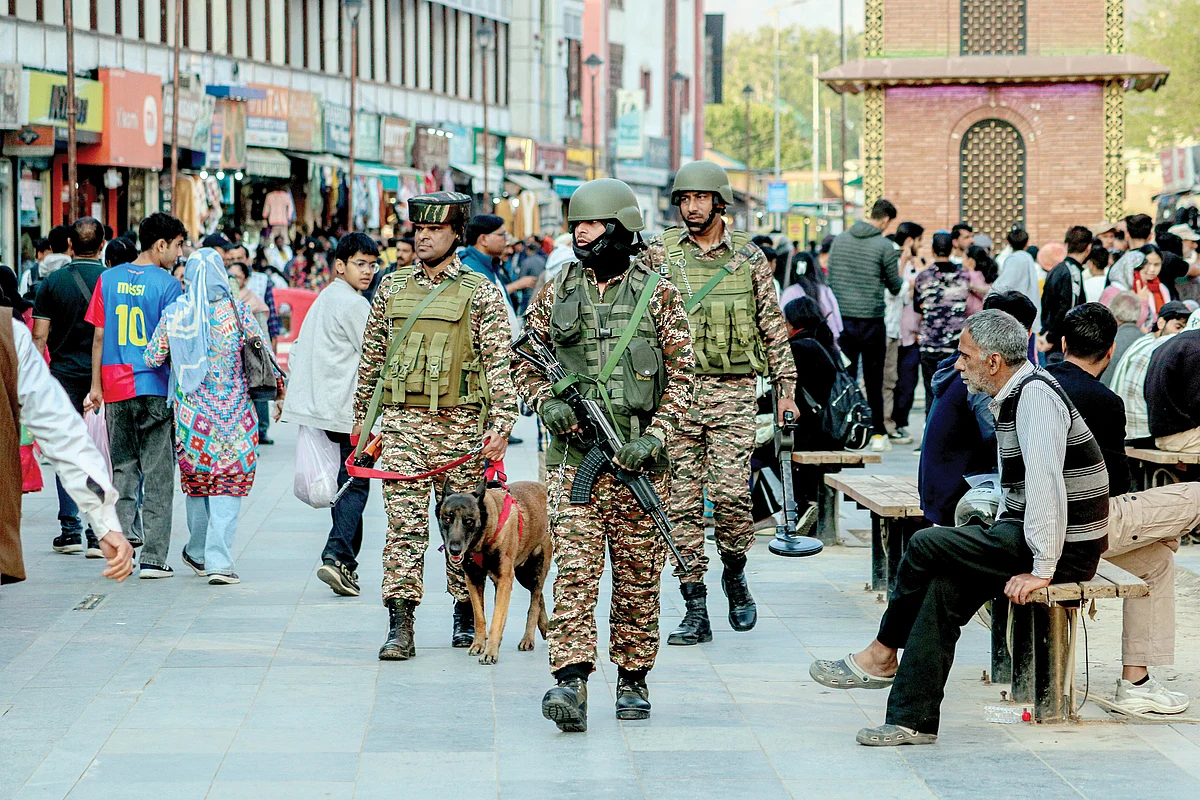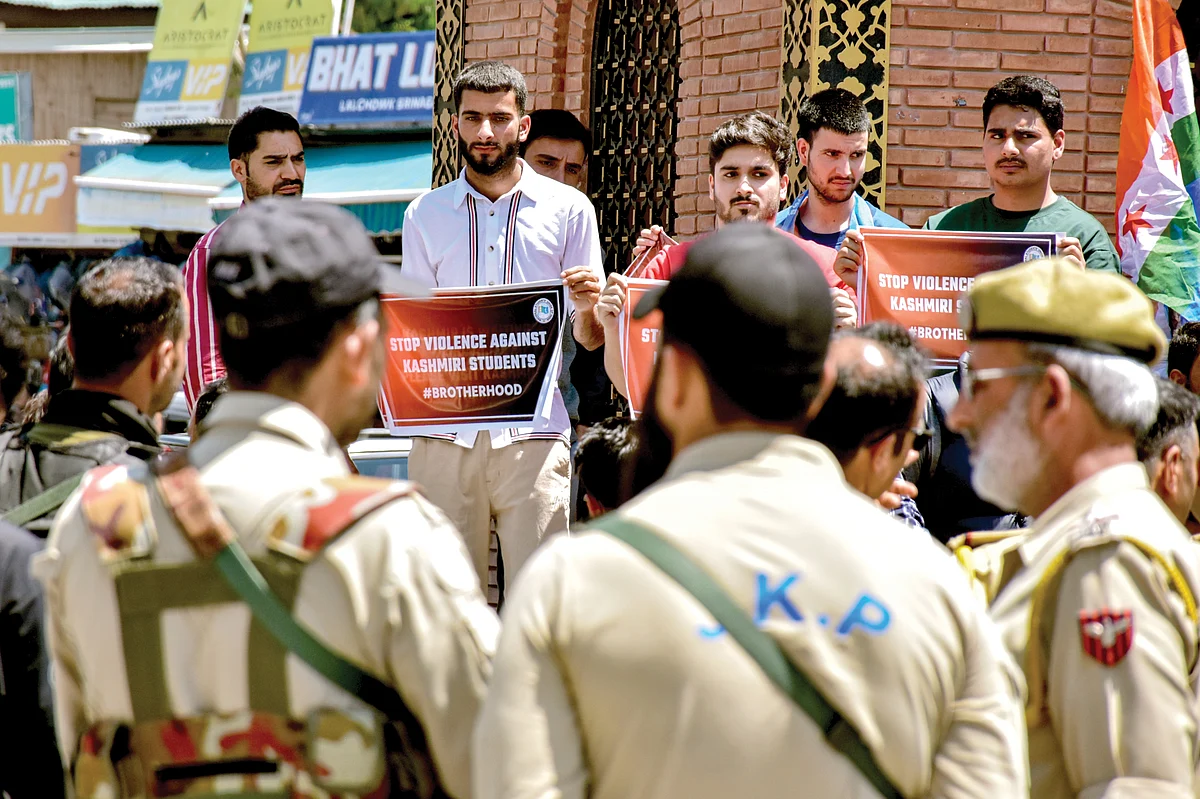Five questions after Pahalgam
Nearly two weeks after the Pahalgam attack, silence is no longer an option, writes Herjinder

In times of national crisis, like the 22 April terror attack in Pahalgam, a fragmented response can embolden enemies and damage public morale. Sober minds advise restraint, and caution against politicising the moment. And yet, silence without scrutiny carries its own dangers — it can obscure systemic failures, diminish trust in institutions and leave the nation vulnerable.
Accountability is the lifeblood of democracy. Asking difficult questions is not an act of division, but a step towards ensuring that these horrors are not repeated. As the shock of the Pahalgam moment begins to subside, the ‘national interest’ lies in fostering a transparent — if still discreet —conversation. Nearly two weeks after the Pahalgam attack, silence is no longer an option. The following five questions demand our immediate consideration:
1. Was Prime Minister Narendra Modi’s absence from the all-party meeting on the Pahalgam terror attack a missed opportunity for national unity?
In response to the deadly terrorist attack in Pahalgam, the Union government convened an all-party meeting on 24 April to chart a coordinated response. Yet, Prime Minister Narendra Modi’s decision to skip the meeting — opting instead to campaign in Bihar for the upcoming assembly elections — looked like this wasn’t top priority and gave the impression of a disjointed national response, when the adversary was surely watching.
In his absence, the meeting, which brought together leaders from across the political spectrum, including Congress president Mallikarjun Kharge and Lok Sabha Leader of Opposition Rahul Gandhi, was chaired by defence minister Rajnath Singh.
Together, they condemned the attack and pledged full support for a strong, coordinated response. The government acknowledged security lapses, which is worth noting, but Mr Modi missed a critical moment to lead from the front and embody national resolve in the face of tragedy.

2. Are we treating Kashmir right?
The attack in Pahalgam is a reminder that Kashmir cannot be managed through security measures alone. Lasting peace in the region demands more than a projection of superficial normalcy. It requires a genuine, sustained effort to engage with the aspirations, grievances and hopes of the Kashmiri people.
In the days following the attack, Kashmir responded in a voice rarely heard so clearly. Streets emptied, shops shuttered and schools closed — not out of fear or coercion but in collective grief and protest. Leading Kashmiri newspapers printed their front pages in black, a powerful visual of mourning and defiance.
Strikingly, this time, the anger was not directed at the Indian State — it was aimed at the perpetrators of terror. Young Kashmiris led peace marches and expressed their desire for a future free of bloodshed. Their response marked a shift: a new generation articulating hope, not hatred, choosing engagement over alienation.
Veteran Srinagar-based journalist Muhammad Saeed Malik told National Herald: “The way they came out to express their anger spoke volumes. It was spontaneous. It showed what today’s Kashmir truly wants.”
Yet, instead of embracing this moment of solidarity, the nation seemed to look away. The outpouring of grief and the show of courage from Kashmiris should have been met with empathy and support from every corner of India. But even as outrage against Pakistan was loud and widespread, messages of solidarity with the people of Kashmir were conspicuously scarce.
A powerful opportunity to bridge longstanding divides was missed. If India truly seeks to counter Pakistan’s influence in the region, the most effective path lies not just in retaliation but in standing with Kashmiris and empowering them. A strong, inclusive, prosperous Kashmir can be our strongest line of defence.

2b. …and are we treating Kashmiris right?
Beyond the Valley, the situation is even more alarming. Across several states — Punjab, Uttarakhand, Uttar Pradesh and others — Kashmiri students and traders have been threatened and attacked. The backlash, fuelled by inflammatory rhetoric, has Islamophobic overtones and dangerously blurs the line between civilians and terrorists — falsely painting all Kashmiris with the same brush.
Media outlets and social media platforms have made it worse, amplifying divisive narratives that portray Kashmiri Muslims as inherently disloyal. Songs, posts and debates pushing the stereotype ignore the painful reality that Kashmiris are often among the first victims of both terrorism and State responses. As Anuradha Bhasin, editor of the Kashmir Times, observed, “Kashmiris have always known, now and then, that they are the biggest victims.”
The government’s response to this wave of hatred, harassment and worse in other parts of the country has been to look away. In the Valley itself, security operations have intensified, and in trying to go after terrorists and their support system, the administration is profiling civilians with very broad strokes, prompting J&K chief minister Omar Abdullah to warn against actions that alienate Kashmiris, urging the nation to recognise their widespread rejection of terrorism.
3. Who is, perhaps unwittingly, furthering the terrorists’ agenda?
The terrorists who struck at Baisaran in Pahalgam had a clear and sinister objective. Their actions were not random — they singled out victims based on religion and executed them with chilling deliberation. But the tourists who died were not their only target; this was an attempt to shatter India’s unity and the fragile relationship between communities; the attack was designed to trigger a cycle of communal hatred.
Inflammatory rhetoric, targeted attacks on Kashmiris and Muslims, and the spread of divisive narratives in the media are exactly what the terrorists and their handlers might have bargained for — and people who are spreading hate are playing straight into their hands.
Also Read: Four steps to foil the terrorists’ design
4. Who should be held accountable?
Following the abrogation of Article 370 in August 2019, the government has consistently projected a return to peace and normalcy in Kashmir. The Pahalgam attack has torn through that narrative, exposing vulnerabilities and underscoring the dangers of complacency.
While the immediate responsibility lies with the Pakistan-backed terrorists who carried out the assault, the failure to anticipate or prevent such an attack raises serious questions about the government’s preparedness and vigilance. That not a single security personnel was present at a site that sees thousands of tourists daily is an alarming lapse. With the Amarnath Yatra set to begin in a few weeks — Pahalgam is, in fact, a base camp for the Yatra — this area should already have been under heightened security surveillance.
Why was it not? Why were warnings not heeded, and why did routine safety measures fail so badly? Members of the J&K assembly have openly questioned the Centre and demanded answers from both security and intelligence agencies. The silence of top officials, despite recent high-profile security reviews — including a visit by the Union home minister — has only deepened public disquiet.
The absence of accountability at the highest levels is both troubling and telling. It is neither reasonable nor useful to expect the government to prevent every terrorist act. But the Pahalgam tragedy points to not just a breach but a systemic breakdown — across intelligence-gathering, surveillance and crisis response.
The responsibility for the failure does not rest with a single office; it spans intelligence networks, local law enforcement and the Central government. The government must confront these hard questions — and remember that demanding accountability is not about finding a scapegoat; it is about transparency, course correction and restoring public trust.
5. Are we hearing the government — or the ruling party?
In the aftermath of the Pahalgam tragedy, the line between the government and the ruling party seems to have blurred. In India’s response to this national crisis, are we hearing from the government or the ruling political party? Rather than official government channels, public communication has been dominated by voices from the BJP, raising this concern.
The official government response has been subdued. A press briefing by the external affairs secretary announced the suspension of the Indus Waters Treaty and a clampdown on issuing visas to Pakistani nationals. PM Modi has chaired multiple high-level meetings, including those of the Cabinet Committee on Security (CCS), but the outcome of these deliberations has not been shared with the public in any meaningful detail.
The vacuum has been filled with partisan commentary. BJP leaders and spokespersons have taken centrestage, offering politically charged responses, often from election campaign platforms rather than official government podiums. For example, while parliamentary affairs minister Kiren Rijiju briefly mentioned ‘security lapses’ after an all-party meeting, there was no follow-up or further acknowledgment of responsibility by anyone in the CCS loop.
PM Modi spoke about the Pahalgam attack at a political rally in Madhubani, Bihar, making it hard to tell if this was the prime minister addressing the nation (why here, then?) or the BJP’s mascot and campaign face addressing voters in a state that goes to polls later this year.
The Pahalgam terror attack was not really directed at the innocent tourists who became cannon fodder, so to speak — it was an incitement, a cynical attempt to sow hatred and division and to trigger a downward spiral. Pahalgam will test our national character, and the choices we make will be revealing.
Follow us on: Facebook, Twitter, Google News, Instagram
Join our official telegram channel (@nationalherald) and stay updated with the latest headlines
